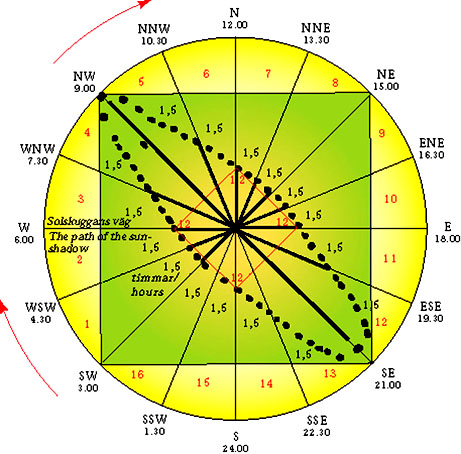| Sundial
The sundial of the sunship is symbolically time divided in 16 stones representing the points of the compass of which the 13 mark the path of the sunshadow during the height of the summer. Place a long staff on the observationssite. Lean the staff 70º towards the north (stone 12). The sun shadow now falls in intervals of 1,5 hours at the quarterplaced stones. 1,5 hours multiplied by 16 makes the 24 hours of the day. Identical: The vikings’ comprehension of time corresponds with the placement of Ales stenar (placement related to the points of the compass). The same principle as for the navigation at sea during the Viking Age. See the vikings’ method for navigation with a sun’s disk. For comparison: The fact that day and night was divided into exactly 24 hours was known to the Babylonians and the Egyptians 5.000 years ago. With that knowledge they built sundials and obelisks, by which the true solar time was calculated with the help of the sunshadow.
Observation site and the staff leaning 70º towards the north: The important northwestern stemstone is sculpted from the middle exactly 70º towards the north i.e. to the same leaning as the sunstaff. © Foto Bob G Lind |

